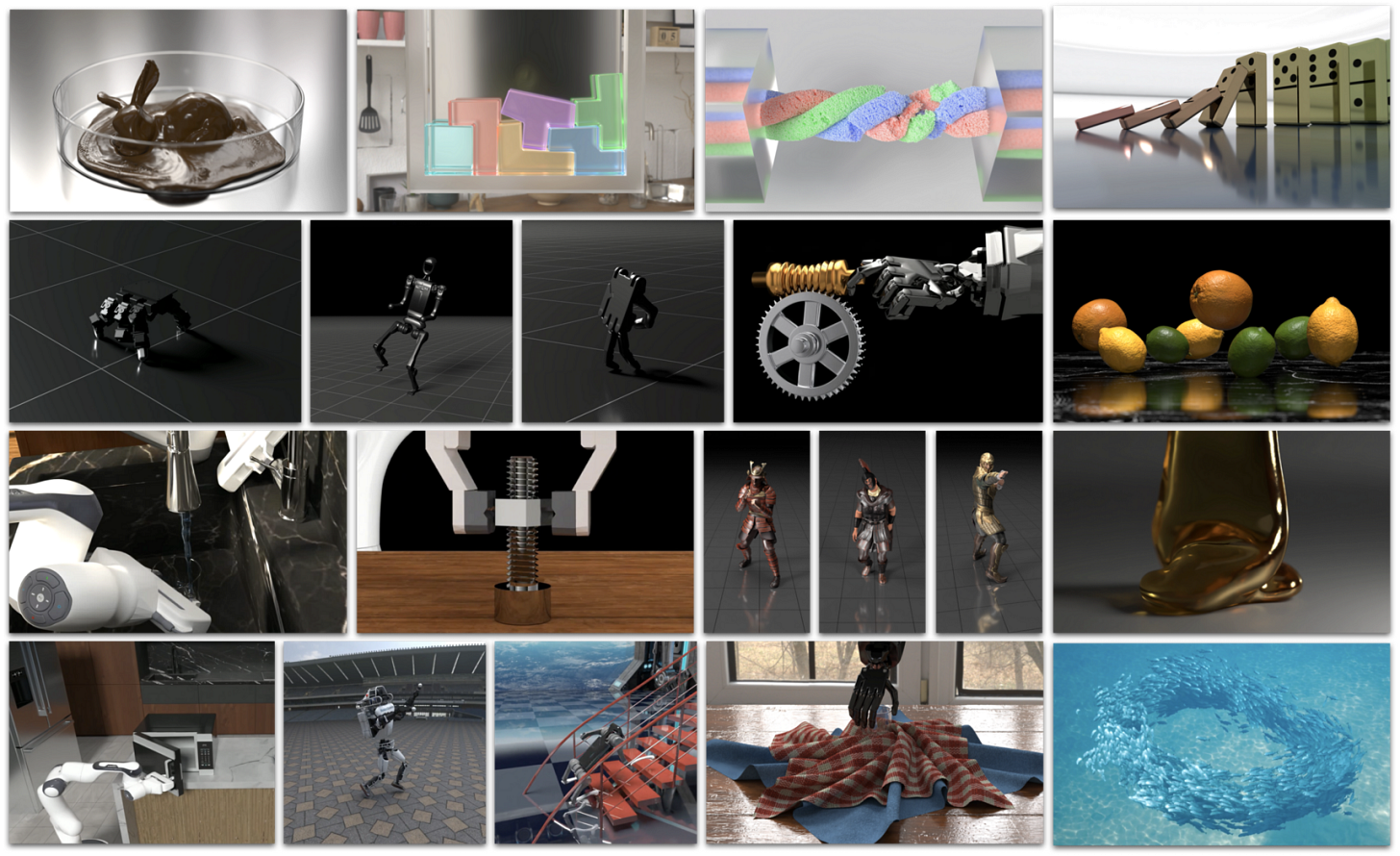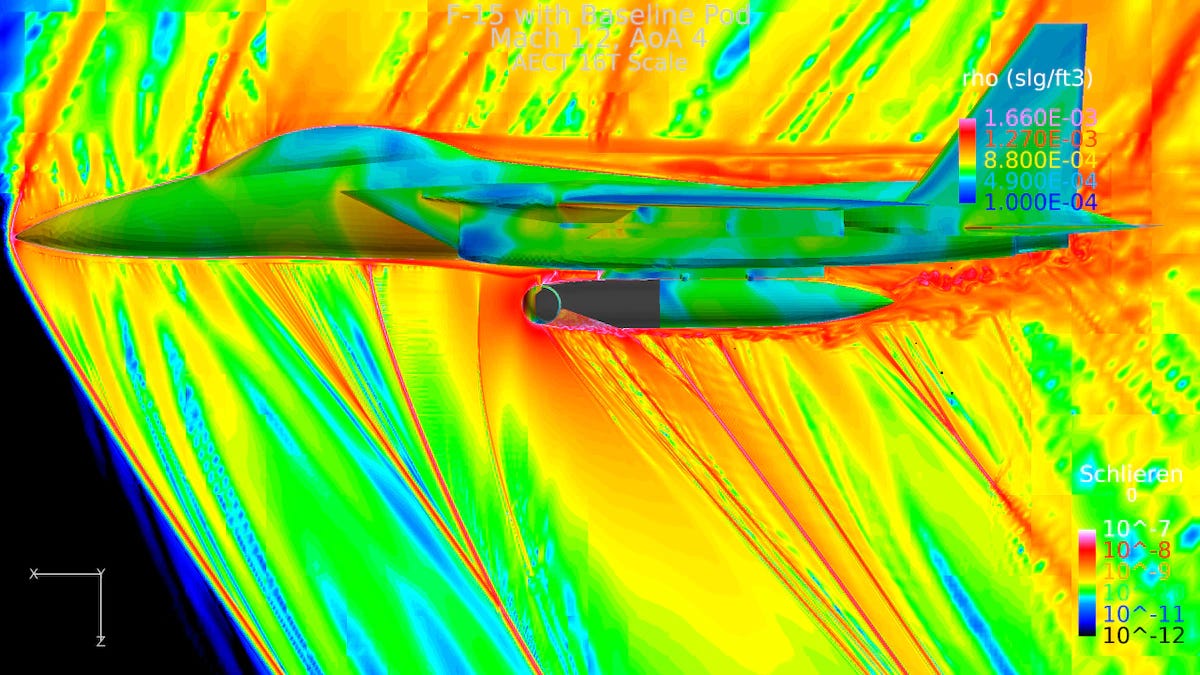Open-Source Physics AI, Mathematics of Turbulent Flows & Ferrari Aerodynamics
📚 Free education is abundant, all over the Internet. It's the desire to learn that's scarce.
🤯 Genesis - A new 𝐨𝐩𝐞𝐧-𝐬𝐨𝐮𝐫𝐜𝐞 𝐩𝐡𝐲𝐬𝐢𝐜𝐬 𝐀𝐈 𝐞𝐧𝐠𝐢𝐧𝐞!
Powered by a universal physics engine re-designed and rebuilt from the ground up, Genesis integrates various physics solvers and their coupling into a unified framework. This core physics engine is further enhanced by a generative agent framework that operates at an upper level, aiming toward fully automated data generation for robotics and beyond.
🐍 GitHub Repo: https://github.com/Genesis-Embodied-AI/Genesis
🔥 Documentation: https://genesis-world.readthedocs.io/en/latest/
Stunning Image Of A Laser Weapon Pod Deployed On Air Superiority F-15 Eagle
The US Air Force released a wind tunnel model image of an F-15 fighter jet with a laser weapon pod mounted on its centerline station. The extensive flow disturbances surrounding an F-15 Eagle with a pod can be seen in a simulated color schlieren image published by the service.
💻 Mathematics of Turbulent Flows: A Million Dollar Problem!
Turbulence is a classical physical phenomenon that has been a great challenge to mathematicians, physicists, engineers and computational scientists. Chaos theory has been developed in the end of the last century to address similar phenomena that occur in a wide range of applied sciences, but the eyes have always been on the big ball – Turbulence.
As such, the Navier-Stokes equations form the main building block in any fluid model, in particular in global climate models. Whether the solutions to the three-dimensional Navier-Stokes equations remain smooth, indefinitely in time, is one of the most challenging mathematical problems. In this talk you will learn the layman language, the main challenges that the different scientific communities facing while attempting to attack this problem.
💧Understand the Physics of Re-Entry Vehicles Using Numerical Modeling and Simulation
Recreating the atmospheric conditions of Mars is a challenging task. Traditional continuum mechanics assumptions are ineffective at high Mach numbers and low densities, making it difficult to replicate re-entry velocity and temperature in wind tunnels. In such situations, numerical methods and computer simulations help understand the underlying physics of re-entry vehicles.
In this detailed case study, learn about computation methodology, atmospheric chemistry modelling, and test cases for vehicle re-entry into the Mars atmosphere.
📚 Can Physics-Informed Neural Networks beat the Finite Element Method?
TL;DR: “Considering the solution time and accuracy, PINNs are not able to beat the finite element method in our study.”
The recent success of deep neural networks at various approximation tasks has motivated their use in the numerical solution of PDEs. These so-called physics-informed neural networks and their variants have shown to be able to successfully approximate a large range of partial differential equations. So far, physics-informed neural networks and the finite element method have mainly been studied in isolation of each other.
🎬 Video of the Week - Ferrari Aerodynamics – For CFD Enthusiasts
💻 Engineering Tool of the Week -SU2
Computational analysis tools have revolutionized the way we design engineering systems, but most established codes are proprietary, unavailable, or prohibitively expensive for many users. The SU2 team is changing this, making multiphysics analysis and design optimization software freely available and involving everyone in its creation and development.
💻 Engineering Tool of the Week – The Finite Element Method: Linear Static and Dynamic Finite Element Analysis
This text is geared toward assisting engineering and physical science students in cultivating comprehensive skills in linear static and dynamic finite element methodology. Based on courses taught at Stanford University and the California Institute of Technology, it ranges from fundamental concepts to practical computer implementations. Additional sections touch upon the frontiers of research, making the book of potential interest to more experienced analysts and researchers working in the finite element field.
Let’s connect on Instagram or LinkedIn!
For any business-related issues or collaborations, email me at support@jousefmurad.com!
Keep engineering your mind! 🧠
Jousef







